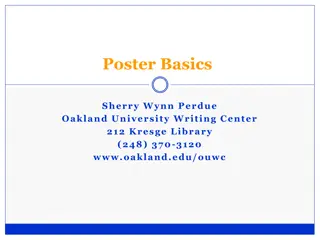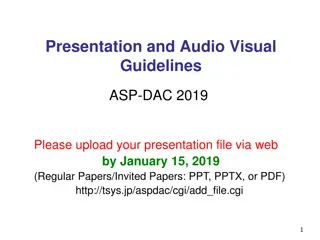Exploring the Pluriversality of Human Rights in the 21st Century
Human rights encompass a broad spectrum of entitlements and standards, rooted in the aftermath of World War II and the formation of the United Nations. The debate between universalists and cultural relativists challenges the notion of universally applicable human rights, highlighting the importance of historical context and global consensus in defining and upholding these fundamental rights.
Download Presentation

Please find below an Image/Link to download the presentation.
The content on the website is provided AS IS for your information and personal use only. It may not be sold, licensed, or shared on other websites without obtaining consent from the author.If you encounter any issues during the download, it is possible that the publisher has removed the file from their server.
You are allowed to download the files provided on this website for personal or commercial use, subject to the condition that they are used lawfully. All files are the property of their respective owners.
The content on the website is provided AS IS for your information and personal use only. It may not be sold, licensed, or shared on other websites without obtaining consent from the author.
E N D
Presentation Transcript
Fostering The Pluriversality Of Human Rights: A 21stCentury Challenge Dr. Adetoun Ilumoka 2016
WHAT ARE HUMAN RIGHTS Rights, very broadly defined are simply claims of entitlement. Since anyone can assert a right, the basis of the claim becomes fundamental and establishes its legitimacy. Rights are also expressed as standards to be aspired to. This very broad definition means that all kinds of actions can come under the rubric of rights, and that issues of power, privilege and socialization are ever present in any rights discourse whether acknowledged or not. The idea of HUMAN RIGHTS, applicable to all persons , all over the world is a modern one born in the wake of the 2ndWorld War and associated with the development of the UNITED NATIONS
WHOSE ENTITLEMENTS AND STANDARDS The major basis of legitimacy of international human rights norms invoked by advocates has been their universality. Inherent, natural, rational, inalienable and non-derogable are all terms that are used in relation to the source and therefore the validity and universality of human rights. However, the major argument advanced in modern times is that they are the result of a consensus of the global community secured through the UN.
UNIVERSALITY V. CULTURAL RELATIVISM? One of the major debates in international human rights discourse has been between those who assert the universality of human rights norms and discourse and those who argue that this discourse has developed largely within a Eurocentric framework and must vary in accordance with the culture of specific countries or societies. This is the so-called debate between the universalists and the cultural relativists .
UNIVERSALITY V RELATIVITY What is CULTURAL about Relativism? When the socialist bloc countries disagreed with the Western countries on the priority accorded to civil and political rights over economic, social and cultural rights, why wasn t this cultural ? The dangers of masking internal differences The importance of historical and contextual understandings
BALANCING RIGHTS AND FREEDOMS
A Case Study Of Religious Freedom Cases Dahlab v. Switzerland Mrs Dahlab wore a hijab to primary school where she worked till the Directorate General of Education of the Canton of Geneva prohibited it. Sahin v. Turkey Leyla Sahin was a medical student in Turkey enrolled in her 5thyear until she was denied admission to classes under an admin regulation of Instanbul University in 1998. Canada v. Ishaq Zunera Ishaq was granted Canadian citizenship in 2014 and required to take the citizenship oath at a public ceremony. A 2011 policy required people who wear partial or full face coverings to remove them during the recitation of the oath. Zunera was unwilling to remove her niquab and claimed that it was a violation of her religious freedom.
PLURIVERSALITY Pluralism AND Universality
THE UN HUMAN RIGHTS COUNCIL The UN Human Rights Council is constituted by the General Assembly and reports to it. One of the complaints about the UN system of human rights enforcement for many years was that it was skewed in favour of Civil and Political Rights, that it favoured Western conceptions of human rights and Western nations and that the Commission was a toothless bulldog that was not taken very seriously. Following the Vienna Conference which declared that human rights are universal, indivisible, interdependent and interrelated, the Human Rights Council is clearly mandated to address all human rights violations and situations and its membership takes into account regional representation.
STRUCTURE 47 Members elected by the a majority of the General Assembly (secret ballot) Representing the 5 UN Regions An 18 Member Advisory Committee Working Group on Communications; Working Group on Situations (5 members each) Other Working Groups, Independent Experts and Special Rapporteurs
The Council has been accused even in its early years of allowing membership by countries which have a poor human rights record. It was boycotted by the United States during the GW Bush era. It has also been accused of focusing disproportionately on the Israeli/Palestinian conflict. In spite of this, it can be considered a new improved mechanism by virtue of the process of electing its membership, its mandate and its modus operandi (processes).
The Universal Periodic Review Process This is a unique process by which the Council undertakes a periodic review of the human rights record of all UN member States in 4 year cycles (the first was 2006-2011) It is viewed as a co-operative process between States (a kind of peer review). Questions are prepared and posed by States to each other based on existing information. The periodic nature of this review can mount pressure on States to make improvements in their human rights records.
SPECIAL PROCEDURES The Human Rights Council appoints independent experts to investigate and intervene directly with governments in situations of urgent appeals and alleged violations and make reports and recommendations on specific situations and issues. These independent experts are sometimes referred to as Special Rapporteurs, or may be constituted as a Working Group. They report to the Council and the General Assembly. The Council has also in the past 9 years identified specific thematic areas which it has addressed. (People with disabilities, Albinism, Transnational Corporations, Business and human rights)
CONSTRUCTING THE NEW PLURIVERSE OF HUMAN RIGHTS. The democratisation of the global human rights environment brings with it challenges and opportunities but deserve a fighting chance rather than cynicism. Conflict situations in Africa and the Middle East that have come under scrutiny by the Council have given an opportunity to NGOs and some of those most affected by the conflicts to have their voices heard in a shift away from the defensive attitudes of States and parties directly engaged in hostilities. In this changing situation, it is more difficult for universality to be a cloak for imperialist domination AND for culture to be the last refuge of tyrants .
THE OPPORTUNITIES OF A NEW ENVIRONMENT Women, especially those in the developing countries have too long been regarded as cultural objects rather than cultural actresses on the stage of international human rights promotion, with predominantly male state leaders and non-state advocates pontificating on what is acceptable, desirable and good for them. Women need to be prepared to engage in the discourse of human rights at the domestic and international levels through rigorous education. Women lawyers in particular need to be trained and encouraged to do research in this area. New domestic institutions need to be part of the construction of the new pluriverse.























